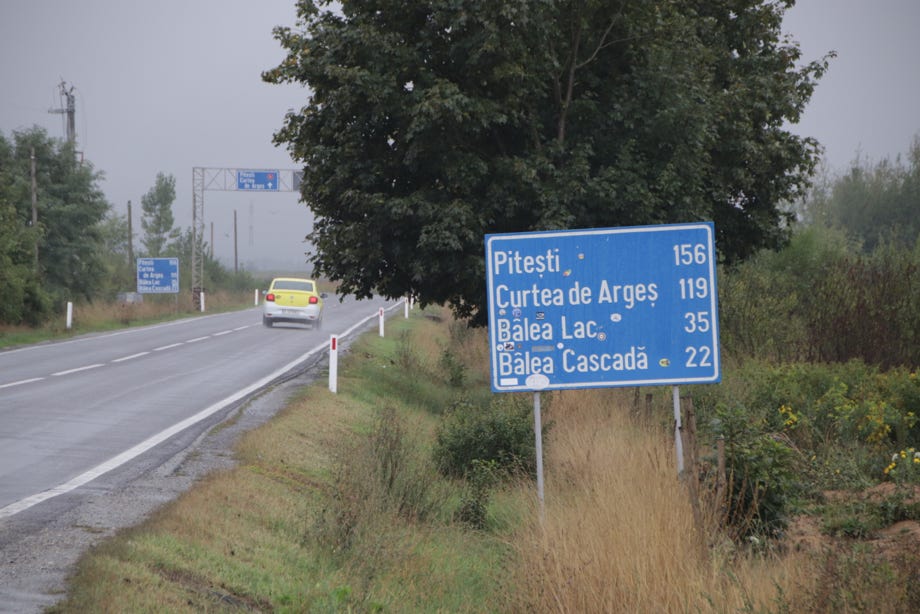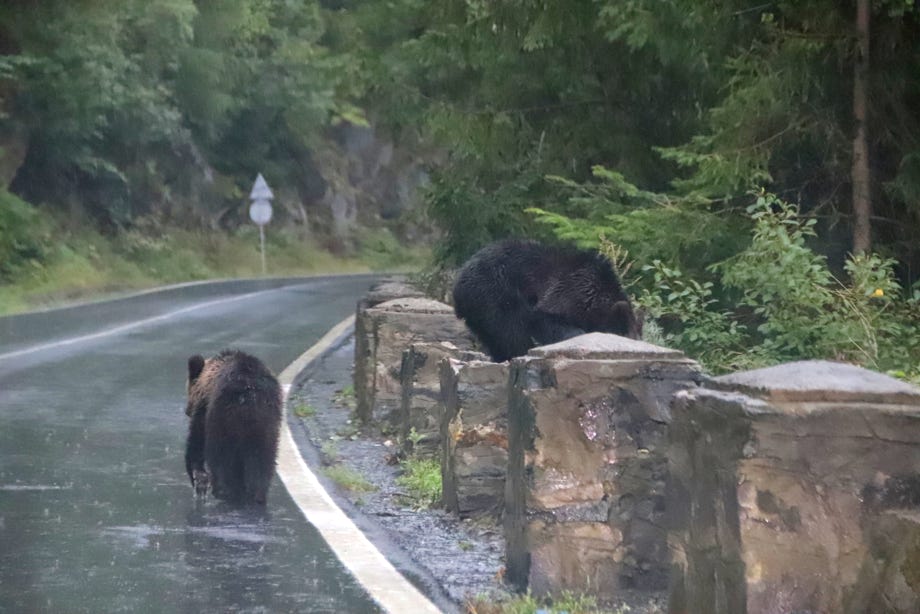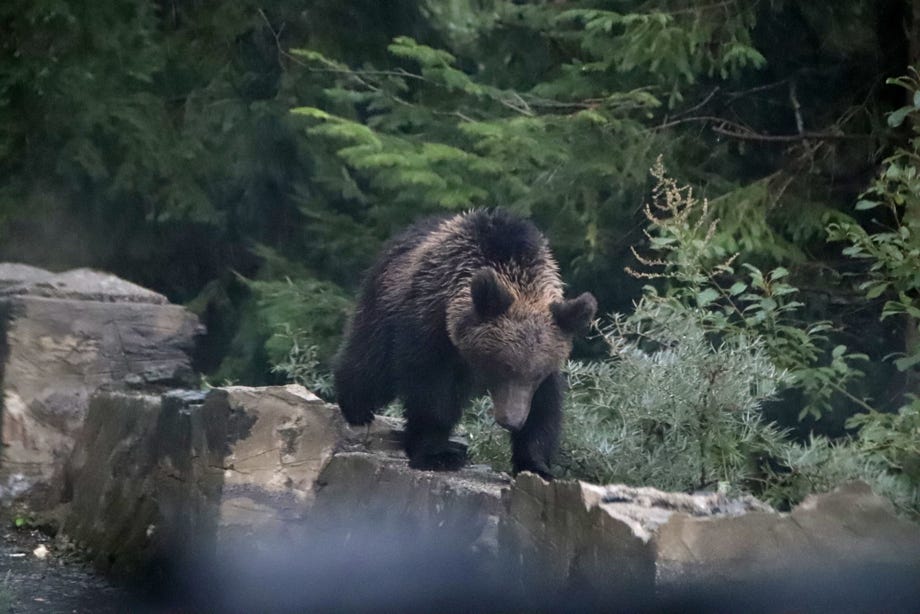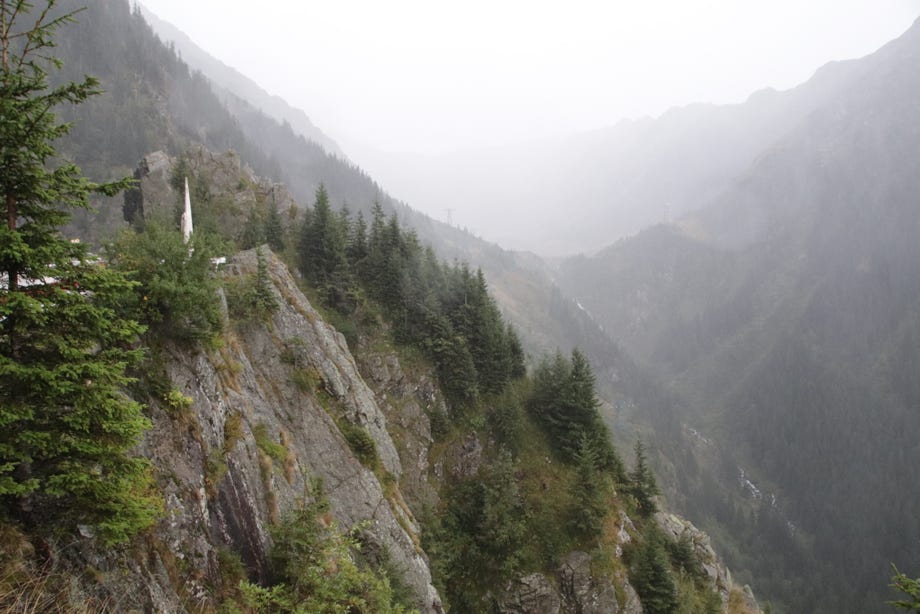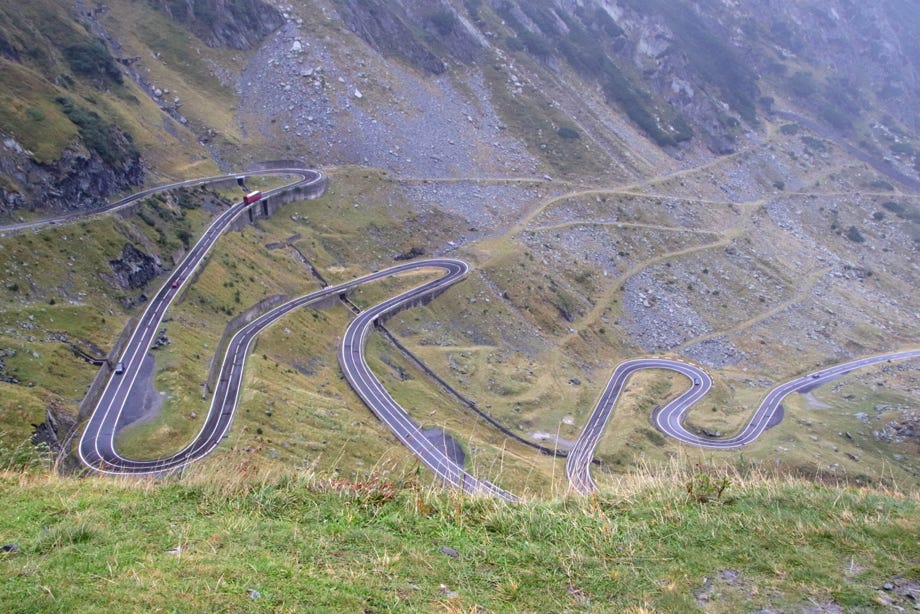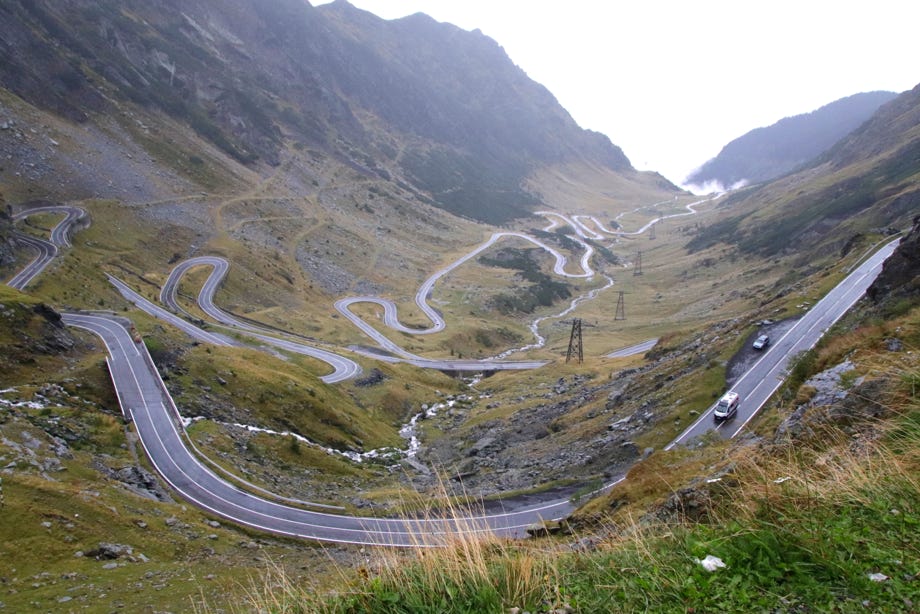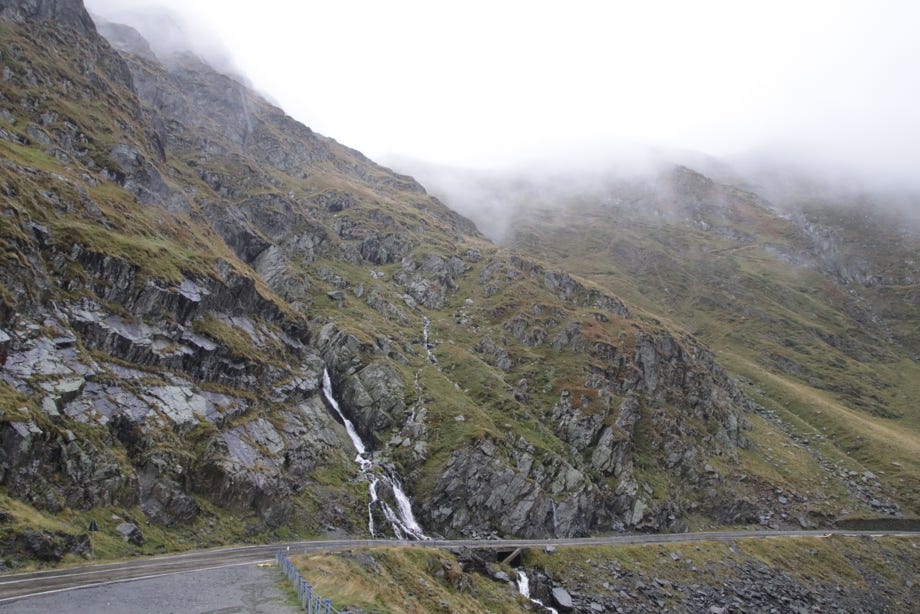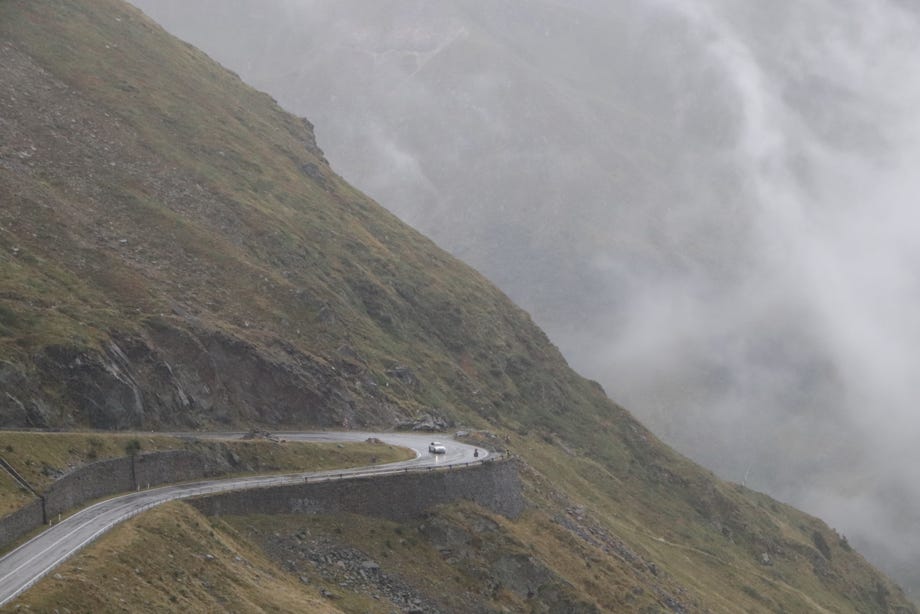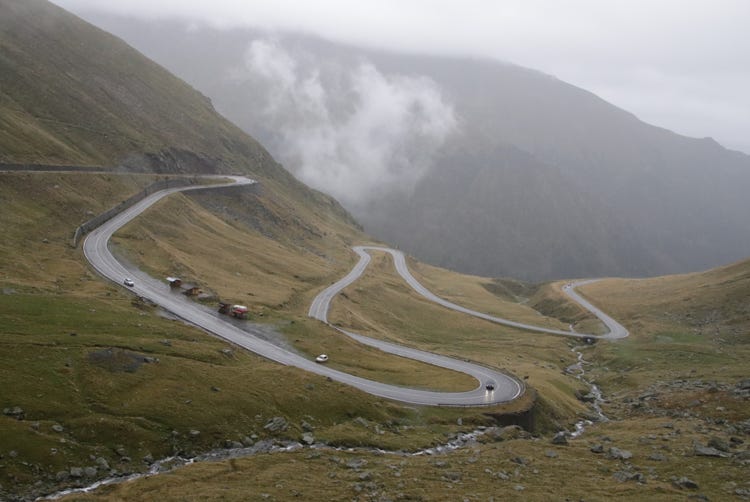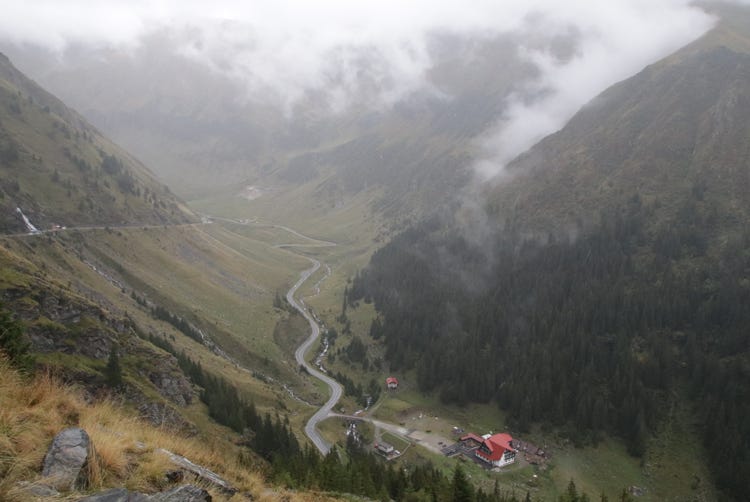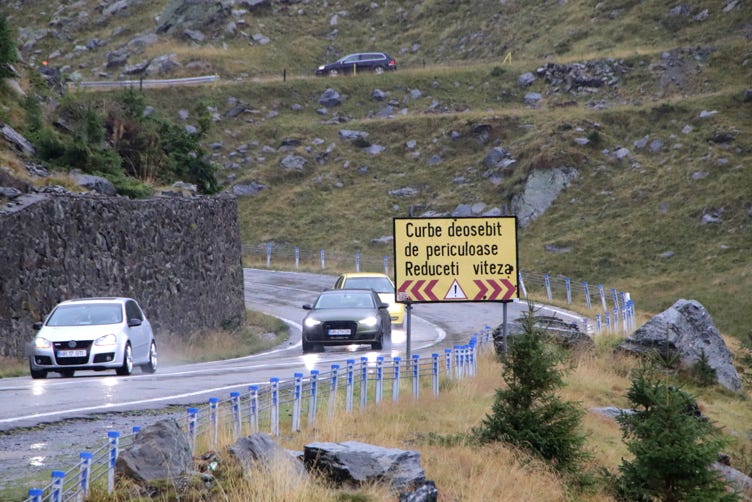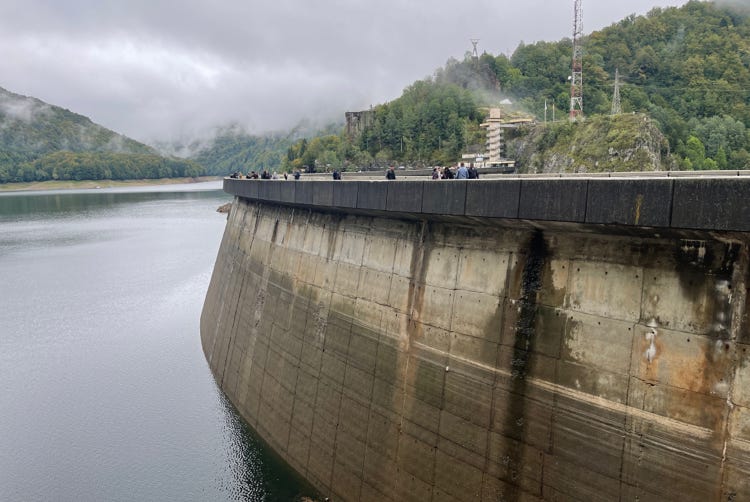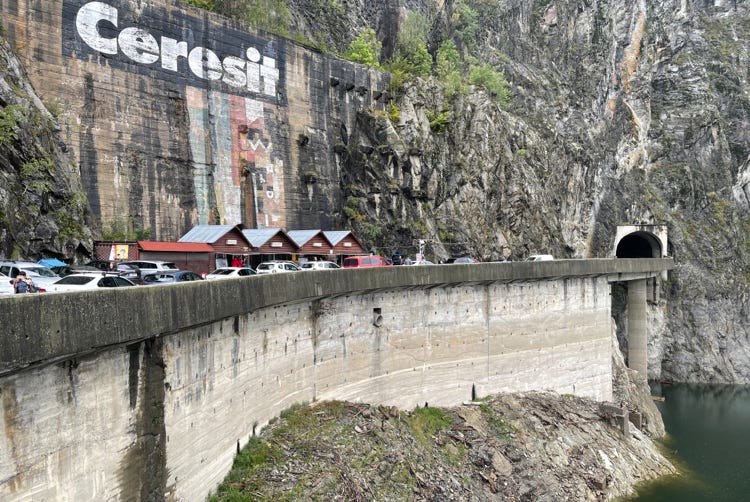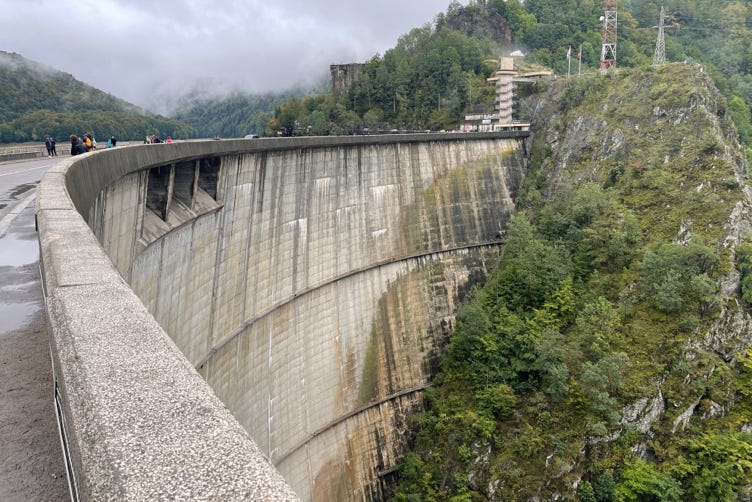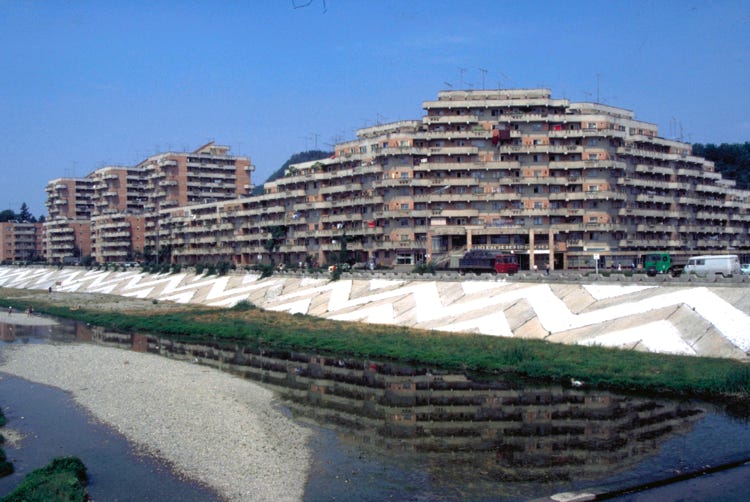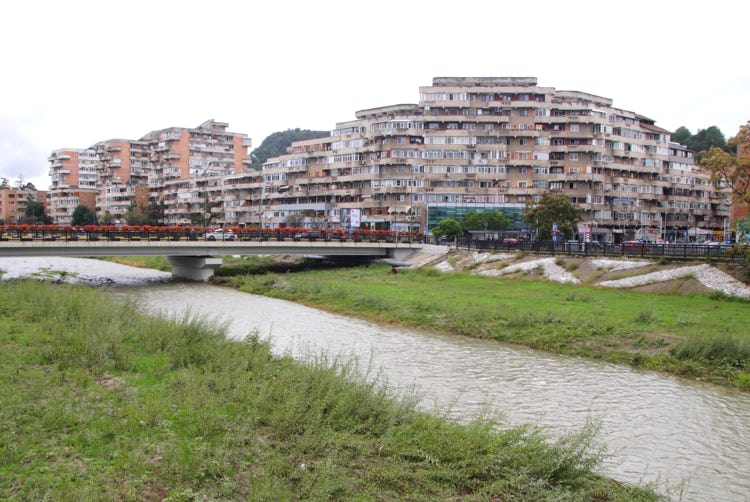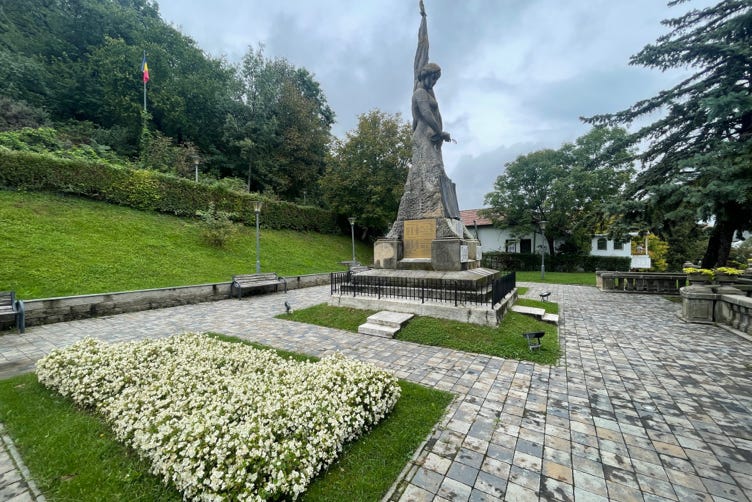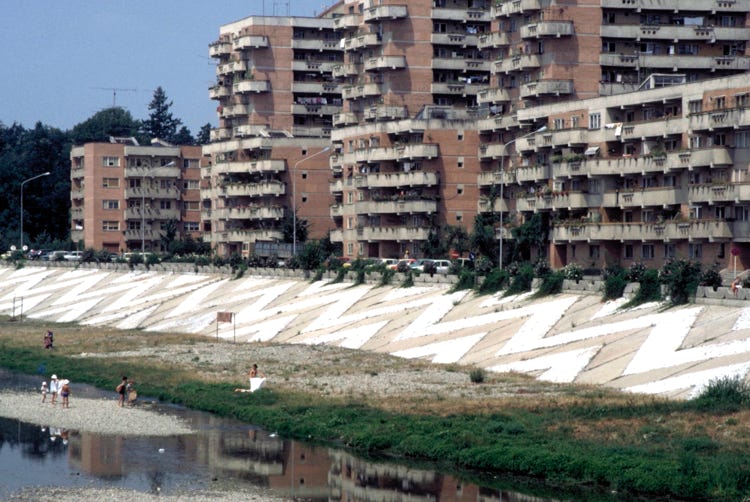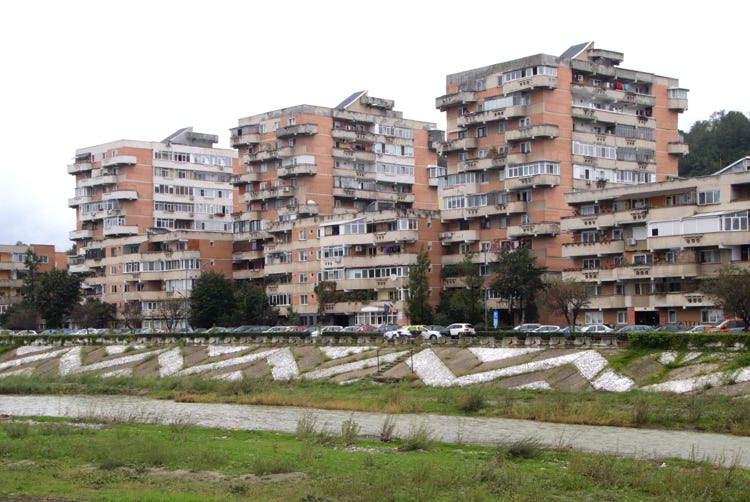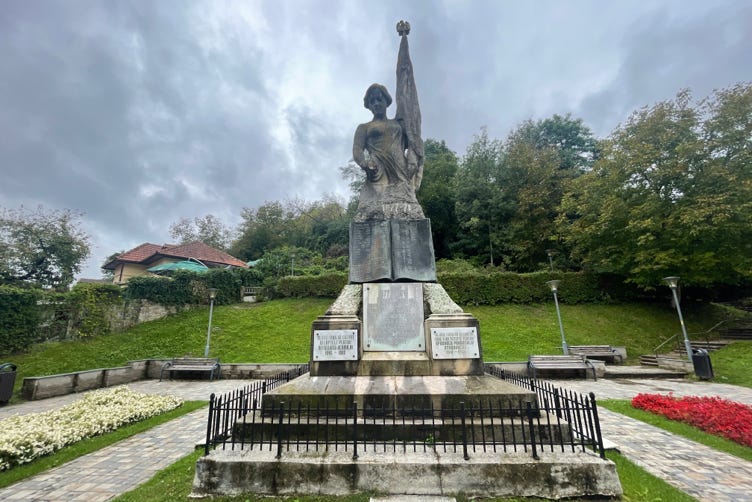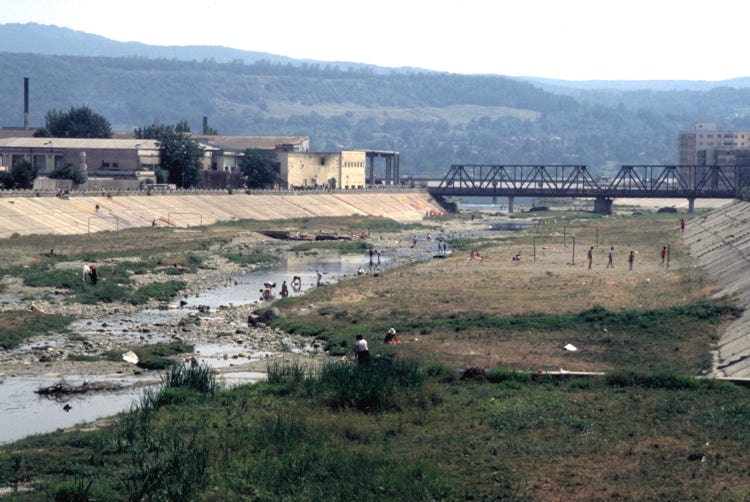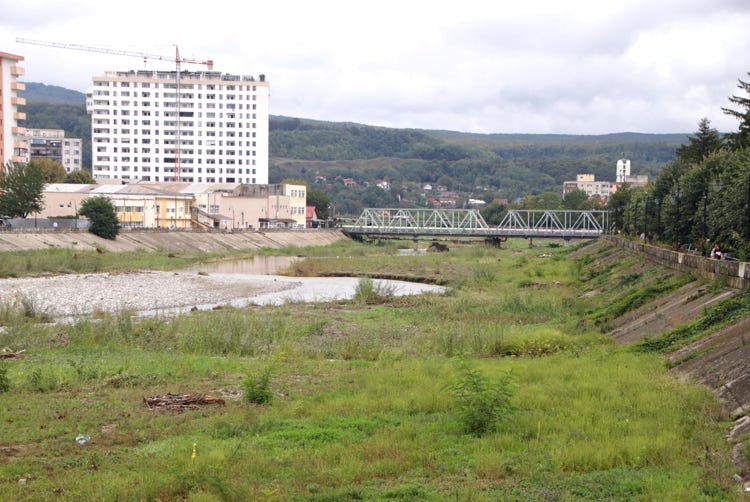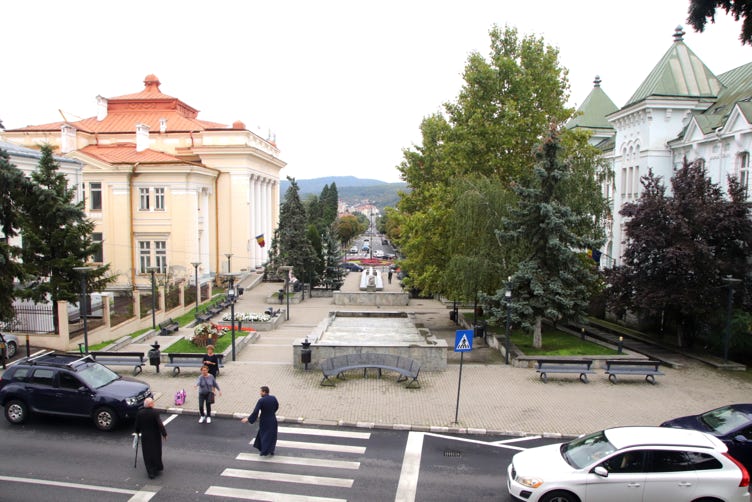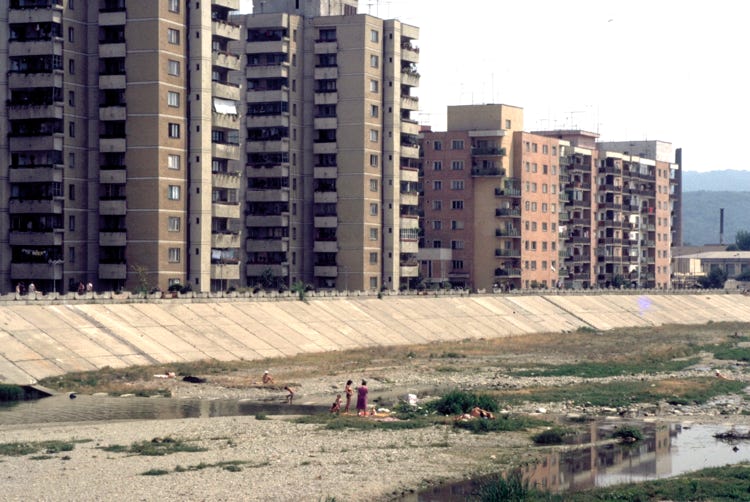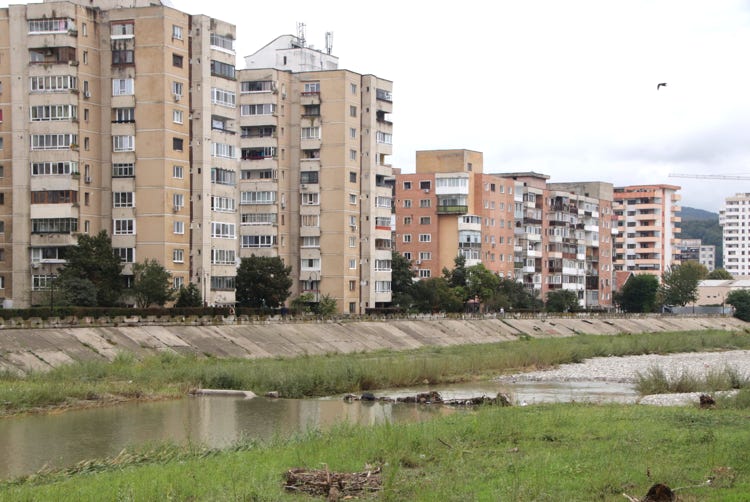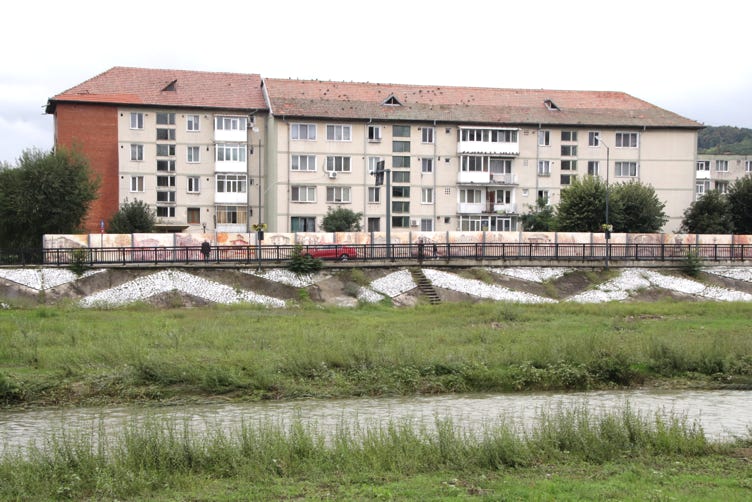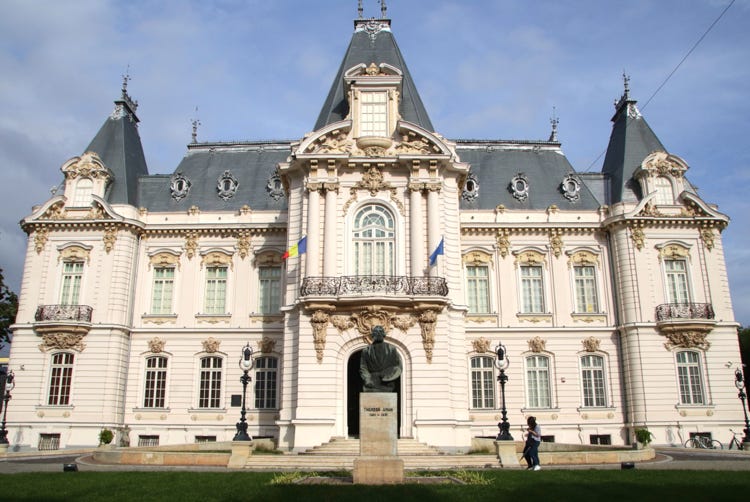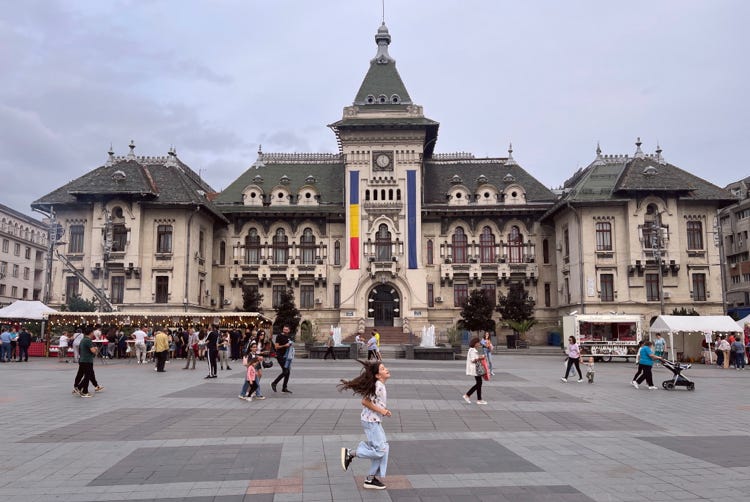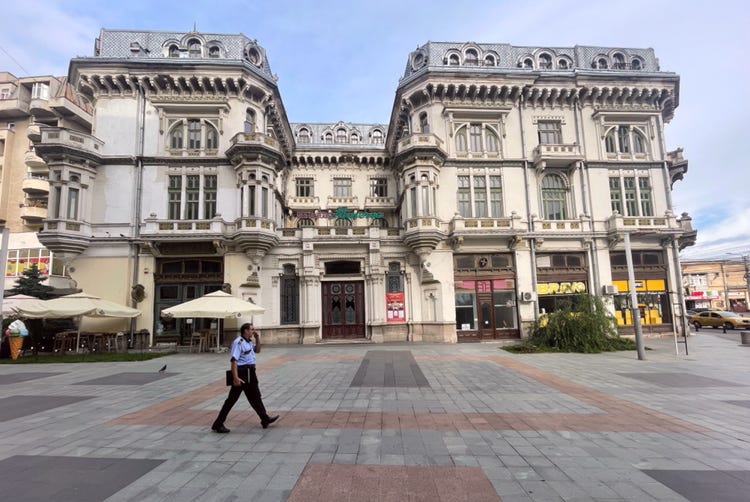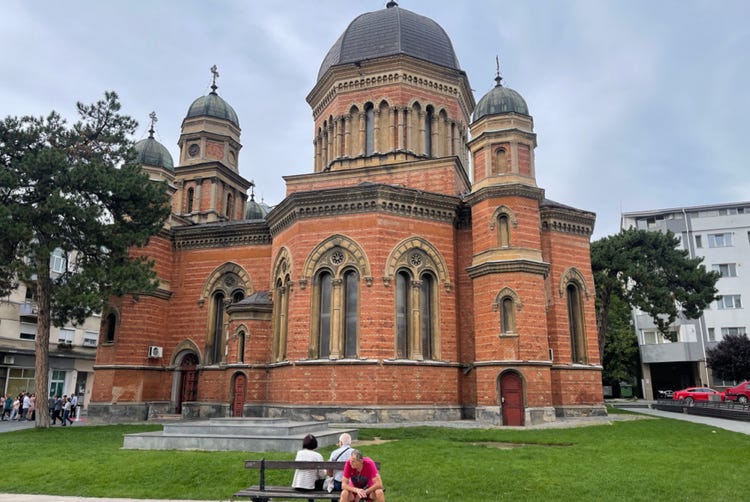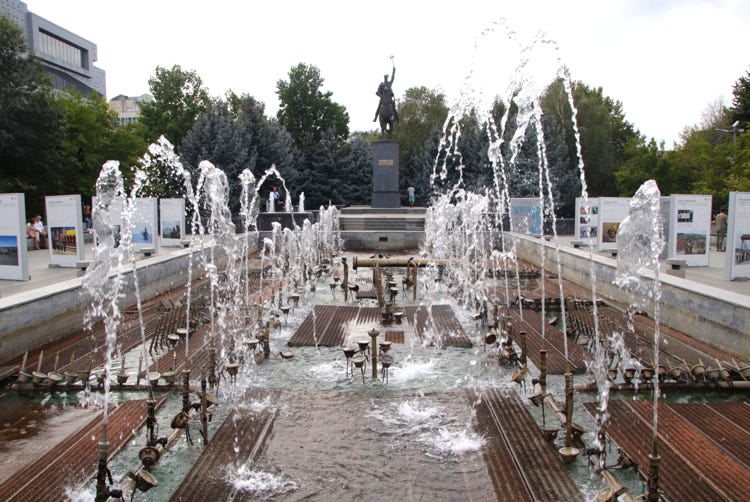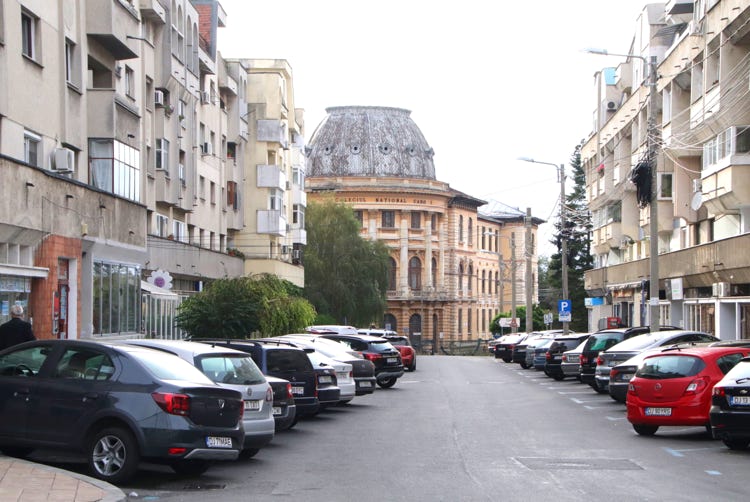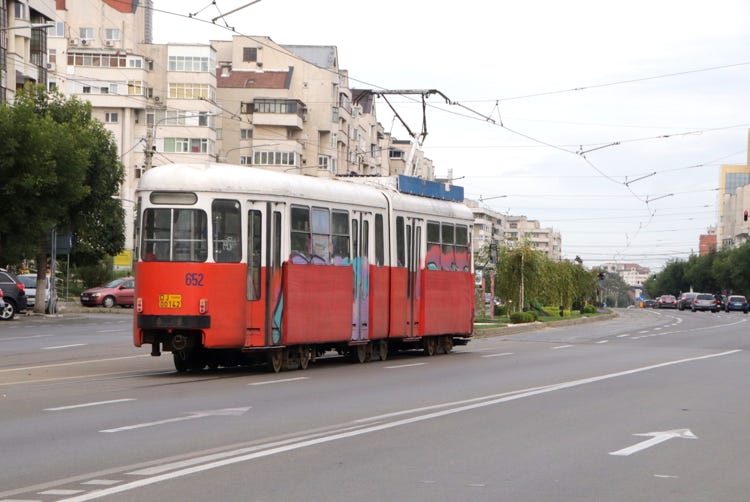
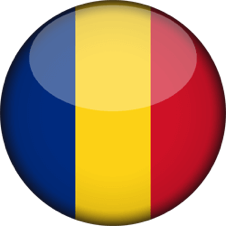
Sibiu to Craiova

Distance travelled = 326 kilometres driving by road and 8.1 kilometres walking (10,830 steps).
The weather on this trip has become something of a theme. As I had my breakfast this morning and looked outside through the window, the weather commanded my attention – it was dark, foggy and raining heavily. I should not have been surprised, as the weather forecast had predicted that a band of heavy rain would move across Romania today. My issue was that a significant component of my drive today was to traverse Romania’s second highest paved road across the Făgăraş Mountains, a high section of the Southern Carpathians. This road is commonly called the Transfăgărăşan Road, although its official name is Route 7C (ah, the romance of place names!).
The road is known as a white-knuckle adventure – the television program “Top Gear” voted it “the world’s best road” – comprising 830 bridges, 27 viaducts and no-one quite knows how many hairpin bends, rising to an altitude of 2,042 metres above sea level. The road was built under the personal orders of Nicolae Ceaușescu as a way of ensuring the Carpathians could be crossed in the event of an invasion. Remarkably it was completed in just four years between 1970 and 1974, during which time “only” 38 workers were killed in accidents.
So, as I munched away on my breakfast I asked myself “will the rain and fog detract from the experience?”, and the obvious answer was “yes”. Then I asked myself “are the rain and fog sufficient reasons to abandon the drive and take an easier route?”, and of course the immediate answer was “no way!”.
I left my hotel in Sibiu at 8:10am, and after a brief stop for fuel, I reached the beginning of Route 7C at its northern end at 9:05am. I noticed that the temperature was 14°C, and inwardly wondered what the temperature would be at the summit (spoiler alert – it was 7°C, but the gale-force wind chill factor made it feel closer to zero).
The first 12 kilometres of the drive were fairly tame, and then the hairpin bends began and didn’t go away. I had a lovely surprise about 20 kilometres from the start of the 7C when I saw two bear cubs on the side of the road. I have included some photos, but the quality is disappointing because they were taken through the windscreen in driving rain between successive passes of the wipers, all the while checking the rear-view mirror that no other car was coming up behind me.
The rain became heavier and the wind stronger as altitude rose. Fortunately there were abundant places provided for drivers to pull off the road and admire the view, but the strong wind drove the torrential rain horizontal. Nonetheless, I ignored the discomfort and made quite a few stops for photos, although I’m not sure that the driving rain did much to help my camera. The wind was so strong at one of the stops that it ripped open the zippered front of my rain jacket; this was a photo-taking excursion for the faint-hearted.
There were several large waterfalls visible from the road, although in the foggy weather they weren’t at their spectacular best. At the summit of the Transfăgărăşan Road there is a large lake (Lake Bâlea), after which the road passes through a long tunnel before re-emerging on the southern side of the ridge. Although the rain and fog continued, the strength of the wind diminished markedly on the southern side of the ridge making the photo-taking stops somewhat less unpleasant.
As the road descended, the alpine grasslands gave way to thick forests, and towards the southern end of the winding road the Vidraru Dam (built in 1965) made quite a spectacular sight that seemed to motivate every passing driver to stop and have a look.
Having completed (and survived) the Transfăgărăşan Road, I continued my drive south to the small city of Râmnicu Vâlcea. This city does not rate a significant mention in any tourist guide. Nonetheless, I was especially keen to call in because I had made a stop there in 1987 to get some photos of several recently constructed socialist housing blocks with residents doing their washing in the adjacent waterway, a small tributary of the River Olt. I was interested to see if the buildings were still there, and if so, in what condition.
You can see the comparative photos below (with 1987 images bordered in red), although today’s overcast conditions didn’t help to lift the somewhat run-down appearance of those buildings. Having completed my comparative photographic assignment I stretched my legs by taking a walk through the city centre, noting that several blocks had been completely redeveloped by demolishing and replacing the buildings I had seen (and photographed) in 1987. The northern limit of my walk was the memorial in Revolution Square.
The final section of my drive from Râmnicu Vâlcea to Craiova was completed without stopping. It was noteworthy for the excellent condition of the road, in stark contrast to the potholed, bumpy, poorly maintained roads I had experienced for almost the entire day since starting on the Transfăgărăşan Road.
I reached Craiova (pronounced “cry-over”) at about 4:30pm as the overcast skies were brightening slightly and I checked into my hotel, the excellent Ramada Plaza Hotel. Craiova is a sprawling city that is noteworthy as being a transport hub and a city of universities. I had chosen my hotel because of its location near the city centre, so I decided to explore the area, taking a one-hour walk from 5:00 to 6:00pm.
There were some lovely old, elegant buildings to see, with the Art Museum and the Administrative Palace being especially noteworthy. The Administrative Palace is situated on the eastern edge of a large open area known (perhaps surprisingly) as Christmas Square. The square, together with the pedestrian plaza beyond (Calea Uirii) was filled this afternoon with stalls selling food, souvenirs and bric-a-brac. Interestingly, Christmas Square also had a large display erected by the US Government promoting US-Romanian relations, although how effectively it was communicating to local people was questionable given that almost everything was only in English language.
Craiova is the first city I have seen in Romania since Bucharest to have trams in the streets. Unlike the trams in Bucharest, which are reasonably new, the trams in Craiova are the old socialist-era streetcars. Naturally, they warranted some photos, which I managed to get as the clouds thickened and the day’s light faded.

